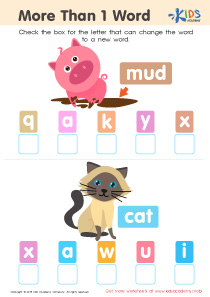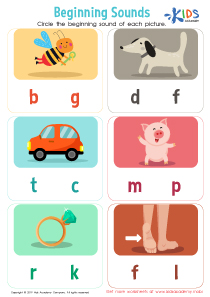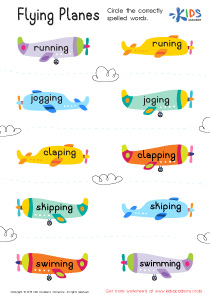Ending Sounds Worksheets for Ages 4-8
7 filtered results
-
From - To
Explore our engaging "Ending Sounds Worksheets for Ages 4-8," designed to enhance phonemic awareness in young learners. These worksheets focus on helping children identify and practice the final sounds of words, a crucial skill for developing reading and spelling abilities. Each activity is crafted with colorful illustrations and age-appropriate challenges to keep students motivated and eager to learn. Ideal for classrooms, homeschooling, or additional practice at home, these resources support early literacy skills while making learning fun. Discover the joy of mastering ending sounds and watch your child's confidence grow as they enhance their language abilities!
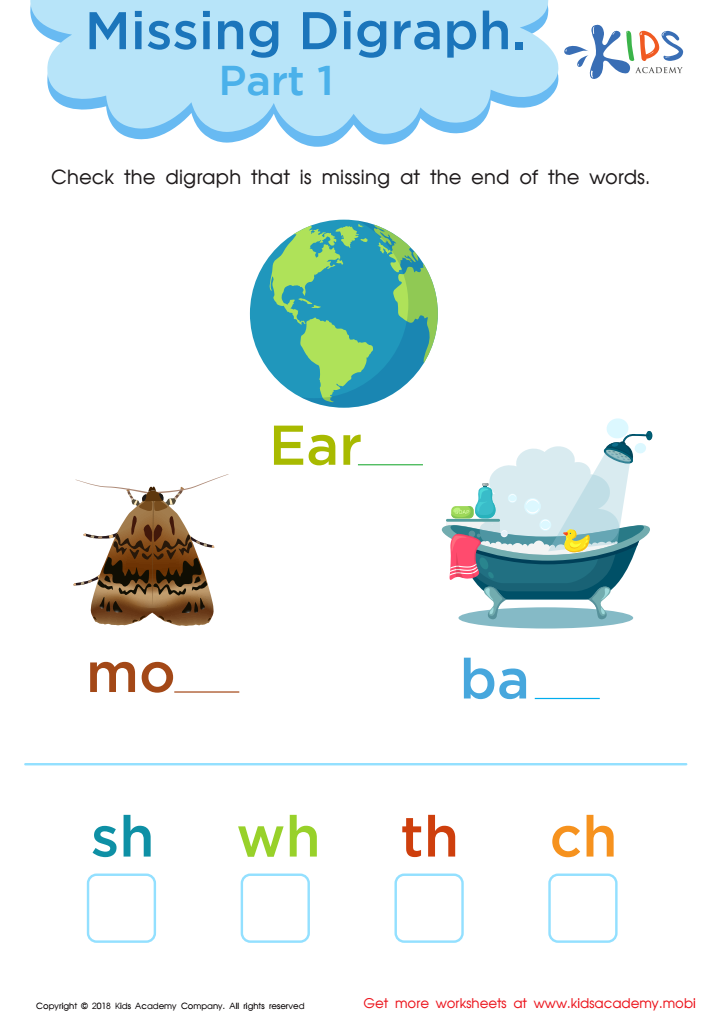

Missing Digraph: Part 1 Worksheet
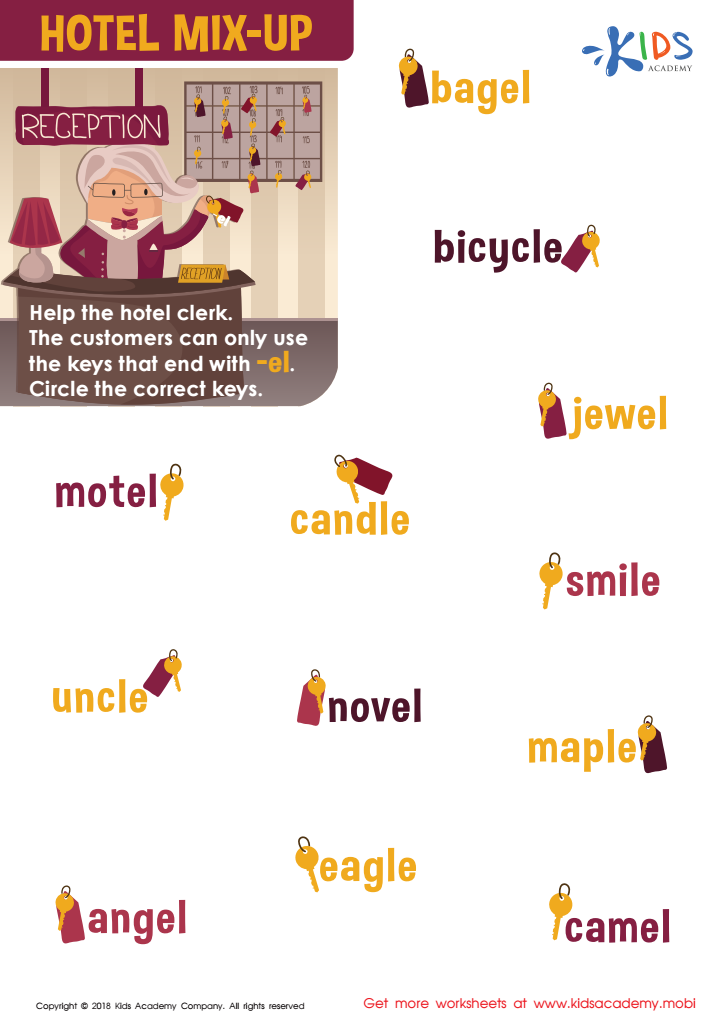

Hotel Mix-up Worksheet
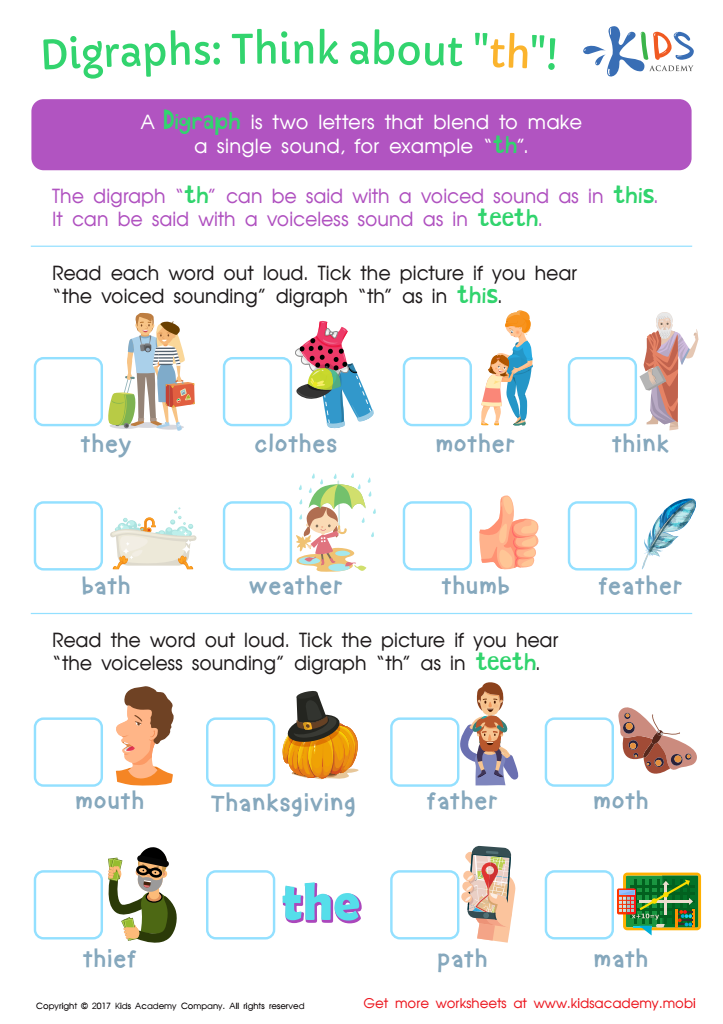

Digraphs: Think About "th" Worksheet
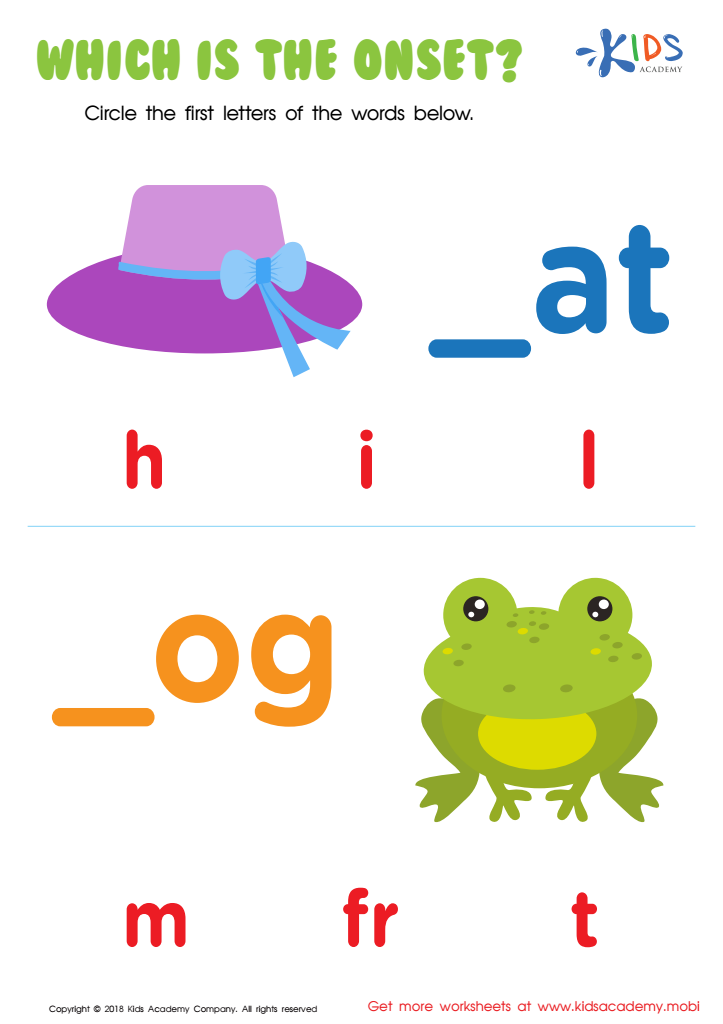

Which Is the Onset? Worksheet
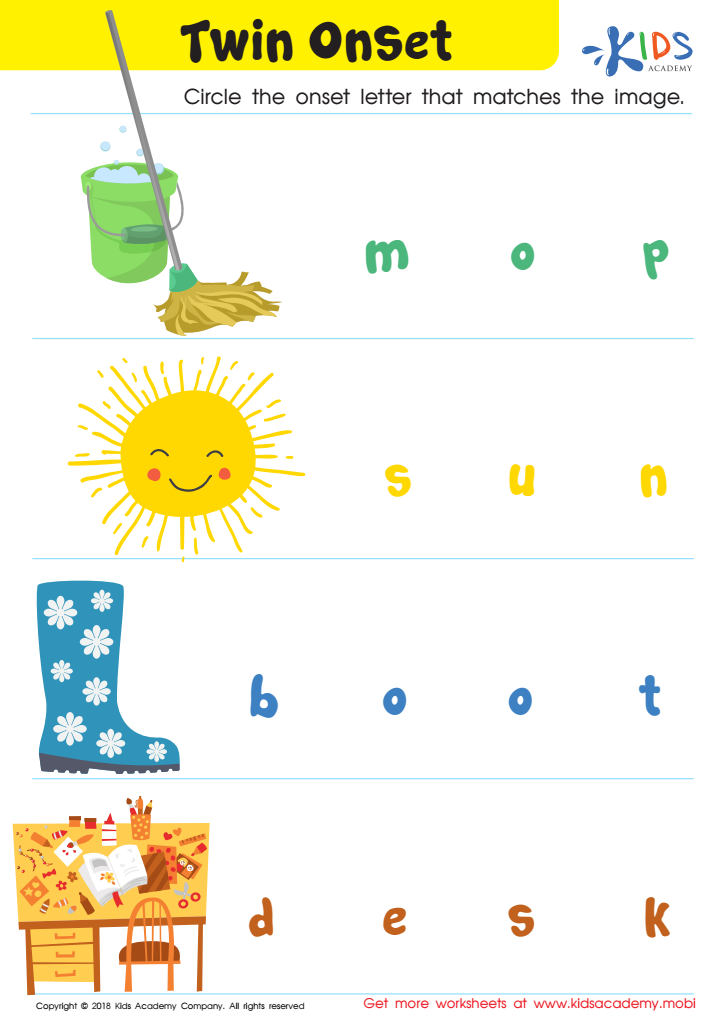

Twin Onset Worksheet
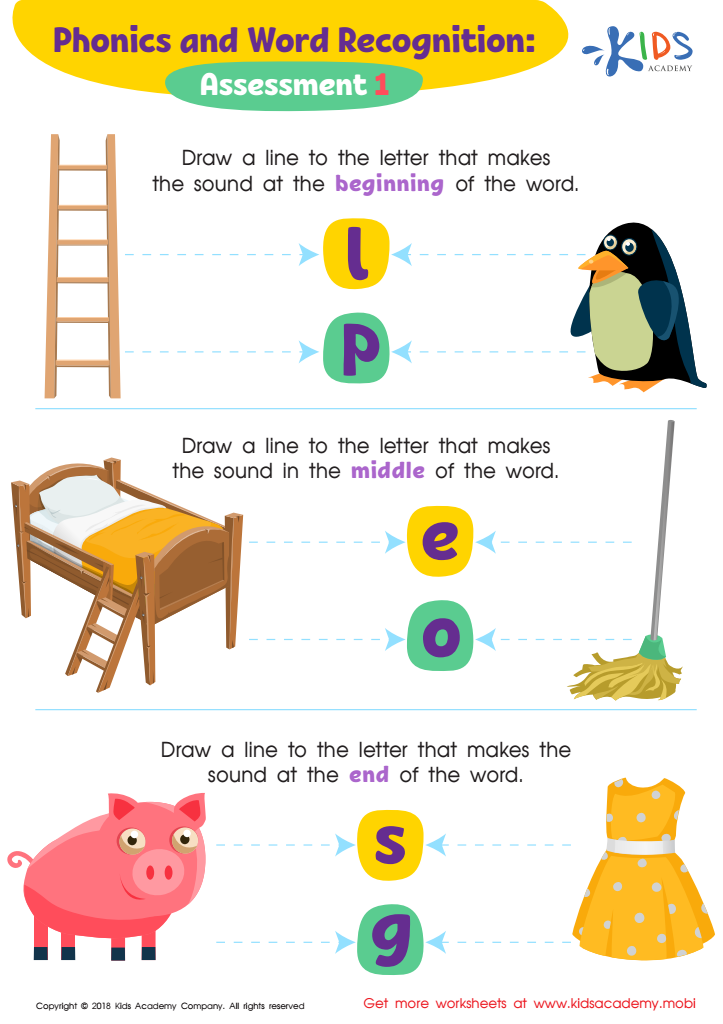

Phonics and Word Recognition: Assessment 1 ELA Worksheet
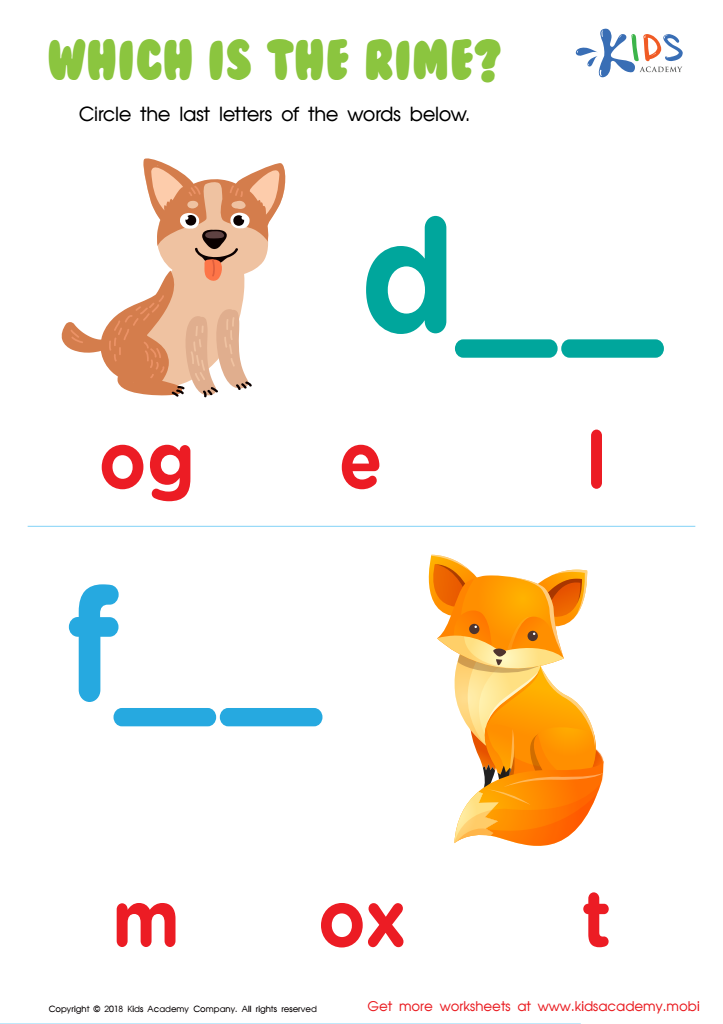

Which Is the Rime? Worksheet
Ending sounds play a crucial role in developing early literacy skills for children aged 4-8. Understanding ending sounds helps build phonemic awareness, which is foundational for reading and writing. As children learn to identify the final sounds in words, they can better segment and blend sounds, making it easier to decode new words as they read.
Furthermore, strong phonemic awareness enhances spelling skills. When children grasp how sounds work together, including at the end of words, they are more likely to spell correctly and creatively express themselves in writing. This extends to vocabulary development, as recognizing ending sounds helps children categorize and expand their word bank.
For teachers and parents, fostering an awareness of ending sounds presents an enjoyable opportunity to engage with children through games, rhymes, and interactive reading. This hands-on learning solidifies crucial skills in a fun environment, benefiting their overall confidence in literacy.
Ultimately, prioritizing ending sounds sets the stage for a child’s journey to reading fluency and comprehension, paving the way for academic success and a lifelong love of learning. Caring about ending sounds is an investment in a child's educational future, helping them navigate and excel in a world rich with written communication.
 Assign to My Students
Assign to My Students






